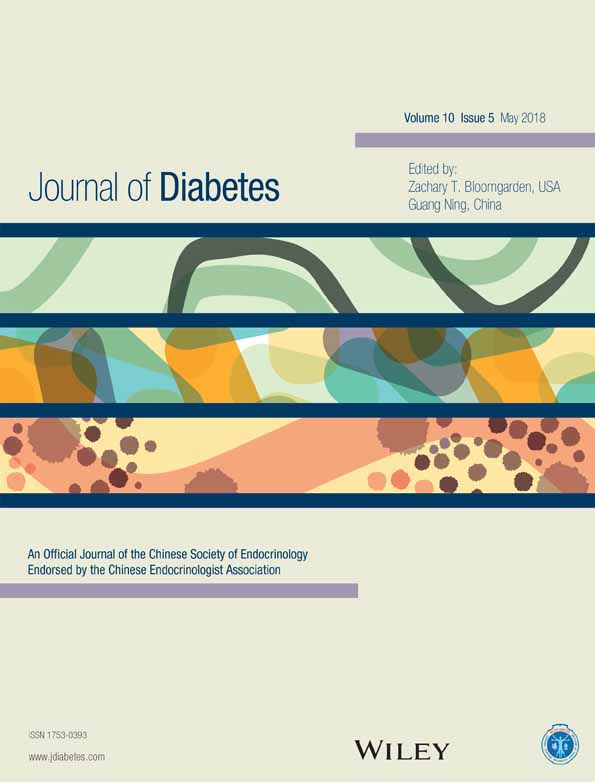Glutathione S-transferase genes and the risk of type 2 diabetes mellitus: Role of sexual dimorphism, gene–gene and gene–smoking interactions in disease susceptibility
谷胱甘肽S-转移酶基因与2型糖尿病风险:两性异形、基因-基因以及基因-吸烟相互作用对疾病易感性的影响
Abstract
enBackground
Compromised defense against reactive oxygen species (ROS) is considered important in the pathogenesis of type 2 diabetes mellitus (T2DM); therefore, genes encoding antioxidant defense enzymes may contribute to disease susceptibility. This study investigated whether polymorphisms in genes encoding glutathione S-transferase M1 (GSTM1), T1 (GSTT1), and P1 (GSTP1) jointly contribute to the risk of T2DM.
Methods
In all, 1120 unrelated Russian subjects (600 T2DM patients, 520 age- and sex-matched healthy subjects), were recruited to the study. Genotyping was performed by multiplex polymerase chain reaction (PCR; del/del polymorphisms of GSTM1 and GSTT1) and TaqMan-based PCR (polymorphisms I105V and A114V of GSTP1). Plasma ROS and glutathione levels in study subjects were analyzed by fluorometric and colorimetric assays, respectively.
Results
Genotype del/del GSTT1 was significantly associated with the risk of T2DM (odds ratio [OR] 1.60, 95% confidence interval [CI] 1.17–2.21, P = 0.003). Gender-stratified analysis showed that the deletion genotypes of GSTM1 (OR 1.99, 95% CI 1.30–3.05; P = 0.0002, Q = 0.016) and GSTT1 (OR 2.23, 95% CI 1.22–4.09; P = 0.008, Q = 0.0216), as well as genotype 114A/V of GSTP1 (OR 2.85, 95% CI 1.44–5.62; P = 0.005, Q = 0.02) were associated with an increased risk of T2DM exclusively in males. Three genotype combinations (i.e. GSTM1+ × GSTT1+, GSTM1+ × GSTP1 114A/A and GSTT1+ × GSTP1 114A/A) showed significant associations with a decreased risk of T2DM in males.
Conclusions
This study demonstrates, for the first time, that genes encoding glutathione S-transferases jointly contribute to the risk of T2DM, and that their effects on disease susceptibility are gender specific.
Abstract
zh摘要
背景
目前认为在2型糖尿病的发病机制中缺乏对活性氧(reactive oxygen species,ROS)的防御作用非常重要;因此, 编码抗氧化防御酶基因可能会影响疾病的易感性。这项研究调查了编码谷胱苷肽S-转移酶M1(GSTM1)、T1(GSTT1)、以及P1(GSTP1)的基因多态性是否会共同导致2型糖尿病的风险。
方法
这项研究总共招募了1120名无亲缘关系的俄罗斯受试者(600名2型糖尿病患者,520名年龄以及性别都相匹配的健康受试者)。采用多重聚合酶链反应(PCR;GSTM1与GSTT1基因del/del多态性)与基于TaqMan的PCR(GSTP1基因I105V和A114V多态性)进行基因分型。分别采用荧光法与比色法来分析研究中受试者血浆ROS与谷胱甘肽水平。
结果
del/del GSTT1基因型与2型糖尿病的风险显著相关(优势比[OR]为1.60,95%置信区间[CI]为1.17-2.21,P = 0.003)。按照性别分层分析后发现, 唯独在男性中有缺失的GSTM1基因型(OR为1.99,95% CI为1.30-3.05;P = 0.0002,Q = 0.016)和GSTT1(OR为2.23,95% CI为1.22-4.09;P = 0.008,Q = 0.0216)以及GSTP1 114A/V基因型(OR为2.85,95% CI为1.44-5.62;P = 0.005,Q = 0.02)与2型糖尿病风险增加有关。发现在男性中3个混合基因型(亦即GSTM1+ × GSTT1+、GSTM1+ × GSTP1 114A/A与GSTT1+ × GSTP1 114A/A)都与2型糖尿病的风险下降显著相关。
结论
这项研究首次证实了编码谷胱甘肽S-转移酶的基因全部都与2型糖尿病的风险相关, 它们对疾病易感性的影响具有性别特异性




